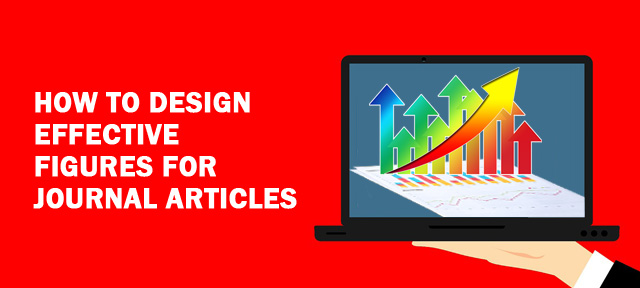Figures, tables, graphs, etc. are an integral part of any article. For scientific publications, it is often these figures that highlight the key results and therefore assume utmost importance. Even an editor of a journal gives added importance to the figures and will often try to place them in prominence. Therefore, there are certain key pointers one needs to keep in mind while designing figures for an article.

- Determine the purpose of the figures and how it helps the narrative. You can use a graph to simplify the reporting of the key findings, a thematic diagram may help supplement the text narrative, flowcharts, for example, are great tools to explain logical argument flows, etc. It does not make sense to litter an article with excessive diagrams if it does not serve a purpose.
- Once you determine the purpose of the figures, it then becomes critical to identify the correct figure. For statistical data, graphs, bar charts, histograms scatter-diagrams etc. are some very effective and well-established figure While choosing a tool it is important to keep in mind the type of journal and the target audience. For more academic journals with a readership more attuned to the subject matter, technical figures or complex statistical figures work best. For a more generic audience, simplified diagrams and figures are better suited to convey the same information.
- Choosing the right tool is critical for designing figure Most statistical tools allow generation of graphs and major statistical figures. Consistency of figures is a critical factor. One can usually recognize the specific style of each software package (Matlab, Excel, Keynote, etc.) or library (LaTeX, matplotlib, Gnuplot, etc.) given the default settings of each. Since these settings are to be used for virtually any type of plot, they are not fine-tuned for a specific type of plot. One needs to exercise the various options in these tools to fine-tune the images, and many authors prefer designing figures in independent design tools to ensure consistency in design.
- It is advisable to not get over-creative with one’s images. Usage of colours is helpful but be careful with the palette. Glaring images with gaudy backdrops often have a negative impact on readers. It is very important to follow the journal guidelines for images while designing the figure Does the print journal allow coloured images or only b&wfigures? Does the journal have any specific colour theme that all images must follow? These are critical considerations before designing.
- The typography of figures is critical. While journals can edit the fonts of the main article to their choice, they cannot edit the typography used in the figure, Therefore, ensure the typography you use is consistent with the journal. It is also important to select suitable typography so that the data tables are legible, of decent font size, do not clutter the image, etc.
A well-designed figure enhances the reading experience of an article in a journal and must be designed with as much care to ensure enriched experiences for the readers.

